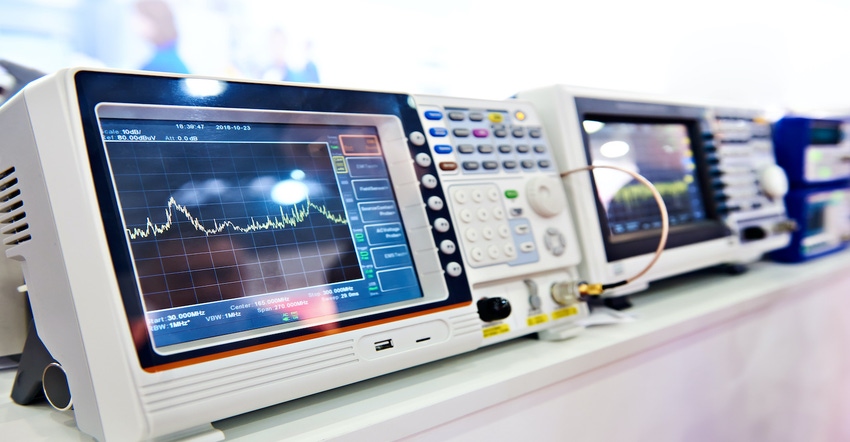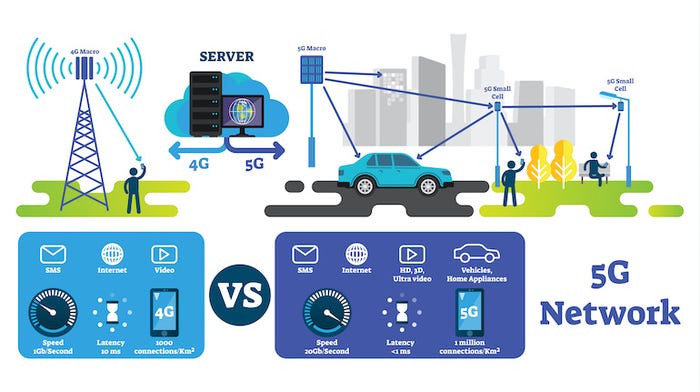Do You Know the Latest Growth Markets for Test Equipment?
The test and measurement equipment markets are hot. But do you know why?
June 30, 2021

John Blyler
Like other major industries, the test and measurement markets have been transformed by digitization. Advances in technologies, such as 5G, industrial IoT, cloud computing, and others, are the reason for this trend. All these advances are making electronic devices more complex to design and test.
Further, digitization has resulted in several new types of tests. For example, more electronic devices need to be tested and measured in both internal combustion and electric vehicles in the automotive industry. Additionally, engineers will need to design new equipment, which must work in a harsh transportation environment.
T&M is Hot
The test and measurement equipment market is expected to grow from USD 27.7 billion in 2021 to USD 33.3 billion, according to a recent report from MarketsandMarkets.
Increasing demand is driving much of the market to grow significantly in equipment from the automotive, transportation, aerospace and defense, IT, electronics, semiconductor, industrial, medical, and others. The reports note that the healthcare sector is expected to exhibit the highest growth among these vertical markets during the forecast period due to the rapid development of new healthcare equipment, patient-monitoring systems, and personal emergency reporting systems.
However, the highest growth is expected in the test and measurement equipment market for repair and after-sales services. Repair services are provided for material and workmanship defects. Like troubleshooting, repairing includes detecting and eliminating faults present in a product in various stages of the product cycle. In addition, companies connect with their customers through toll-free numbers, online chat, or emails to provide round-the-clock technical assistance, cites the report.
5G – Automotive and IoT
The largest market for test and measurement equipment is currently North America. One of the drivers for this growth is the advancement of autonomous driving and Internet of Things (IoT) technologies. Both areas need faster (lower latency) and larger bandwidths, which can readily be achieved through 5G. As a result, the US is one of the active participants in the league for commercializing the 5G network throughout the country.
According to Rohde-Schwarz, the percentage of electronic devices in cars has been growing at an annual rate of 15%. New applications are continuously being added. For instance, mechanical components are being replaced by industrial robot components of steer-by-wire systems, radar-based safety systems, and new telematics systems designed for collision avoidance and traffic flow control applications. This advanced technology is driving demand for testing and measuring equipment to ensure the proper functioning of all systems and devices.
For example, before vehicle-to-everything (V2X) communication is ready for consumer use, developers must ensure the reliability and maturity of the technology. This means that rigorously testing and verification will be needed.
Field testing in the real world will have to be complemented with simulation testing in the lab. The latter is also critical for testing in the development and introduction phase to verify compliance with the standards. Traditional communication protocol testers will have to be used with scenario simulation tools.
Typical simulation tests would include emergency electronic brake light, left turn assist (LTA), intersection movement assist (IMA), and congestion control testing.

John Blyler is a Design News senior editor, covering the electronics and advanced manufacturing spaces. With a BS in Engineering Physics and an MS in Electrical Engineering, he has years of hardware-software-network systems experience as an editor and engineer within the advanced manufacturing, IoT and semiconductor industries. John has co-authored books related to system engineering and electronics for IEEE, Wiley, and Elsevier.
About the Author(s)
You May Also Like


.jpg?width=300&auto=webp&quality=80&disable=upscale)


